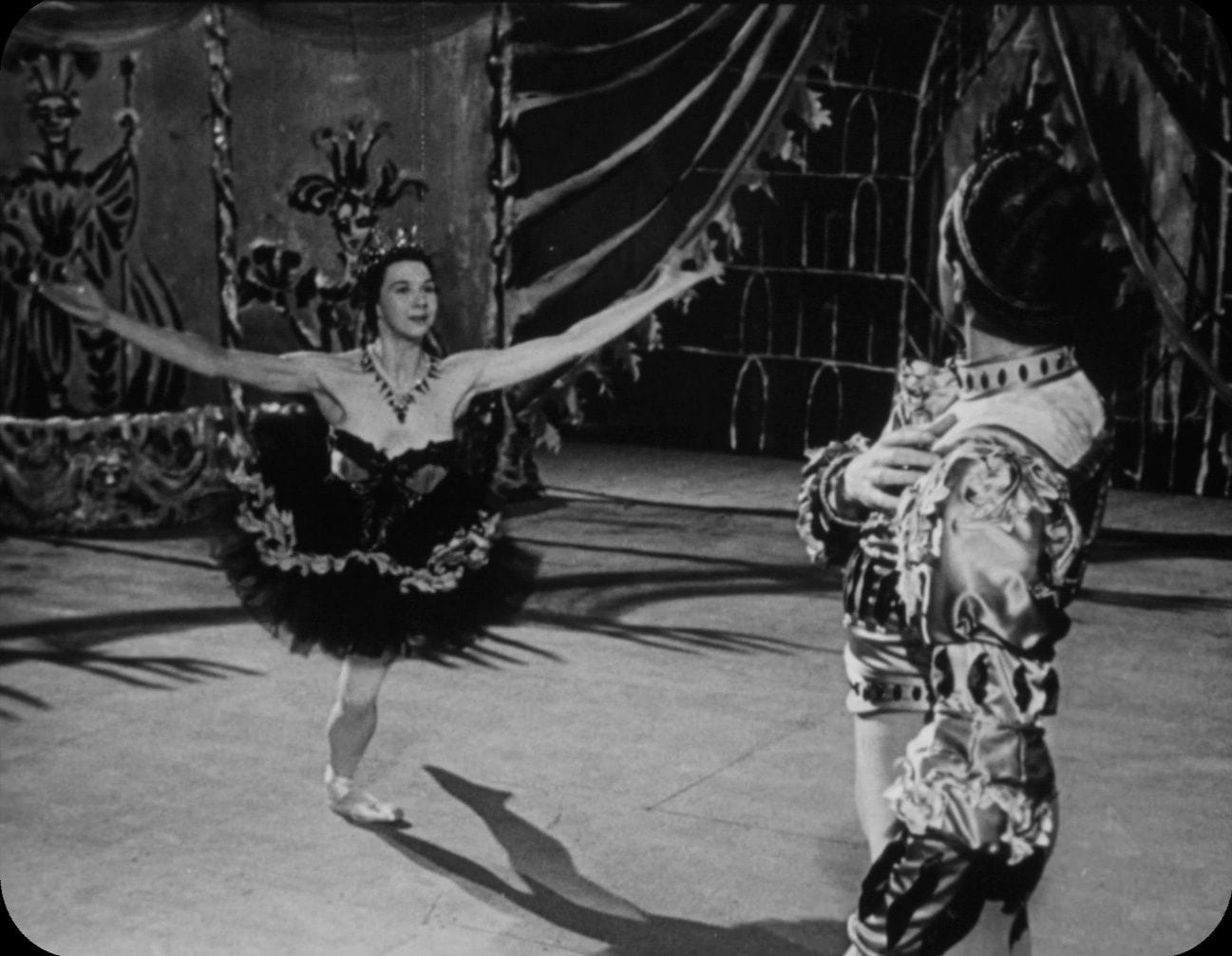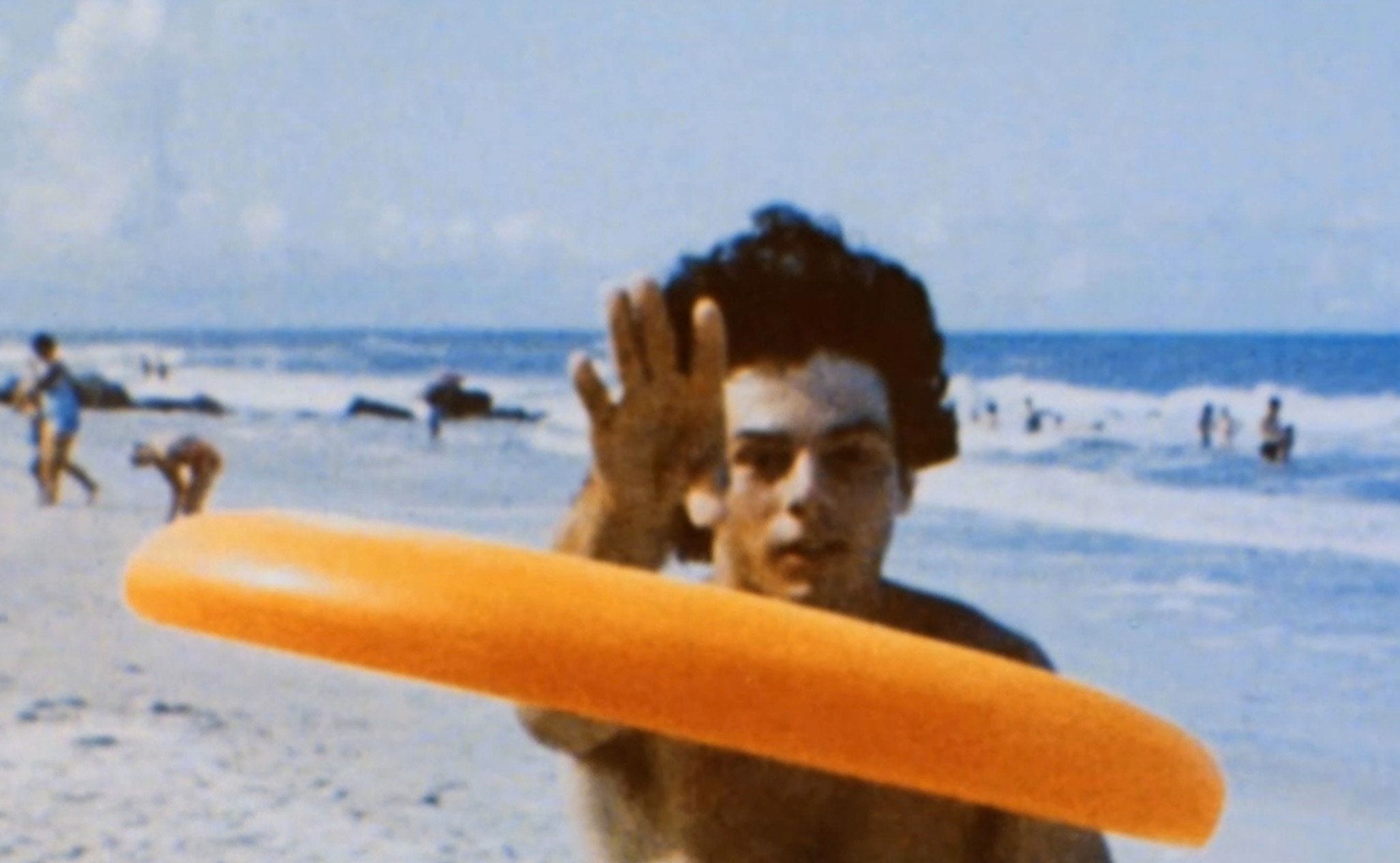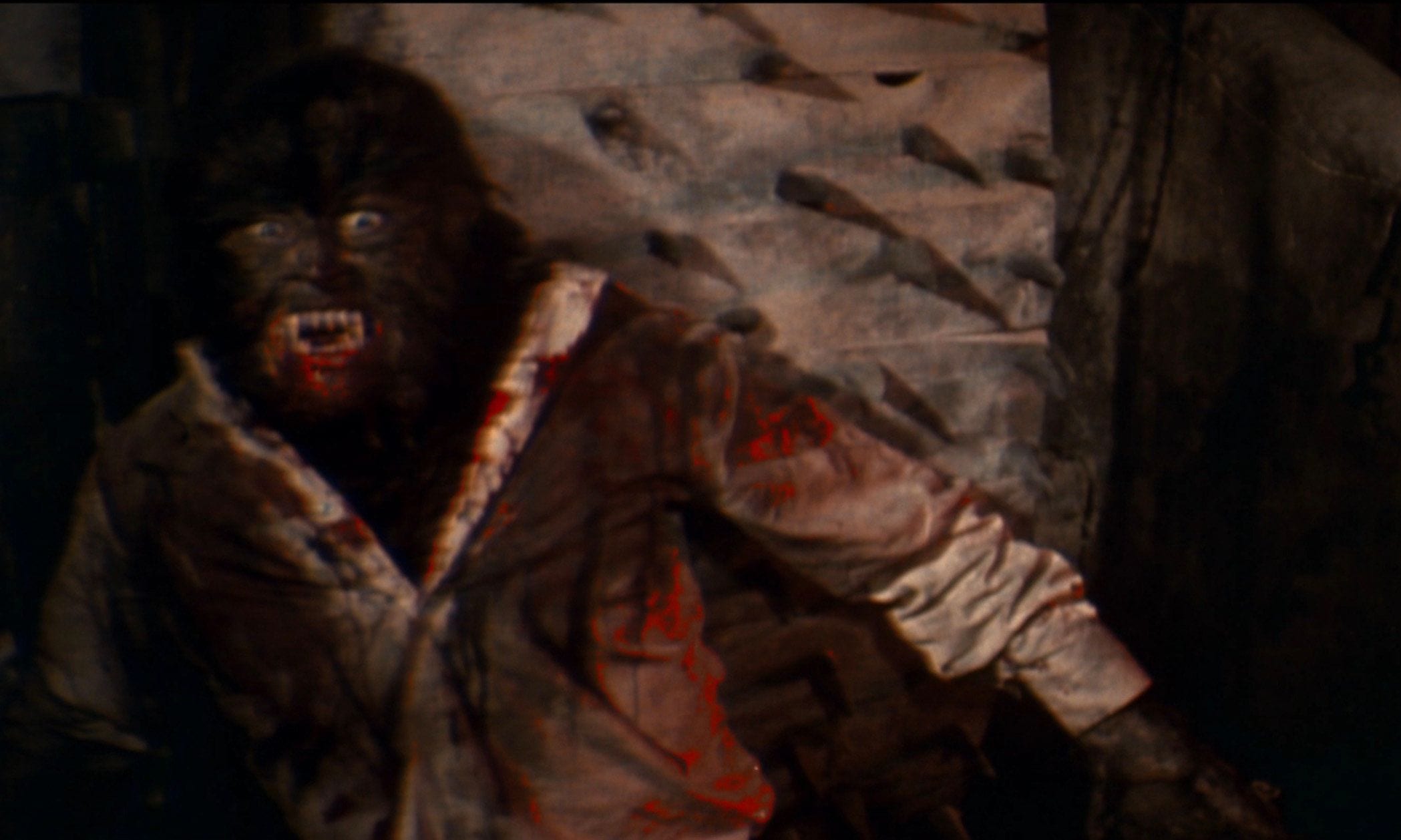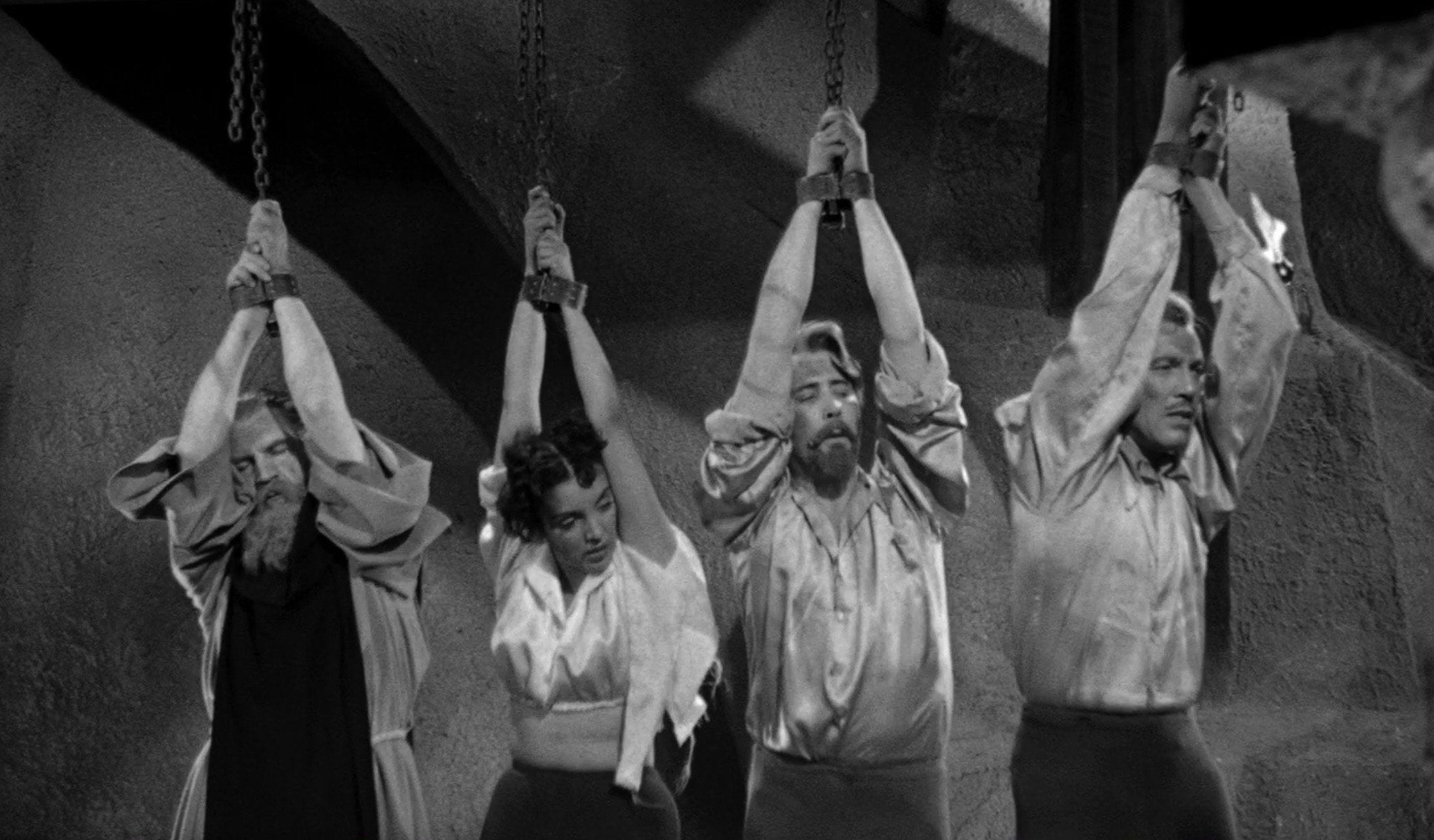
Five years ago, Flicker Alley put out a delightful collection of 3-D Rarities, reviewed by PopMatters here. 3-D TVs are harder to find now than they were then, but we’re glad that isn’t stopping the good folks from curating another round of rarities and oddities courtesy of the 3-D Film Archive. Thus we’re graced with 3-D Rarities II, and these items are rare indeed.
As Mike Ballew‘s entertaining liner notes explain, the origin of this Kickstarter-funded labor of love dates back to the World 3-D Film Expos of 2003, 2006, and 2013, when 3-D mavens from around the world packed into Hollywood’s Egyptian Theatre for a weekend of stereoscopic debauchery.
While the feature presentations were, of course, announced in advance, the sold-out and top-secret Rarities shows didn’t announce their schedule, so audiences could only quiver in speculation. Ballew writes of the selections: “Some were bonbons, sweet to the taste but fluffy and unsubstantial; others were bizarre concoctions, to be scarfed down practically on a dare; a select few were delicacies, savory and well-seasoned by the passing of years.” This Blu-ray is a souvenir of those catch-all programs.
In the name of full disclosure and with that refreshing candor that’s made my name a byword in the back alleys and mean streets of cinematic dilettantism, let me assure my dear readers that I don’t possess a 3D TV, which I believe they don’t make anymore. I proceed from the premise that unless a movie’s worth watching in two dimensions, the third won’t much improve it. Fortunately, this Blu-ray detects your TV’s capacity and is fully capable of presenting its program in glorious flatness. So let’s examine what’s here and project our dimensional imaginations.
Before the main feature, we get an hour of shorts, the first of which survives by what we might as well call a miracle. The liner notes declare that more is known about the rescue of Jack Rieger’s A Day in the Country (1941) than its production, and that background is certainly more gripping than the film. Please be assured that it’s got nothing to do with Jean Renoir’s 1936 French movie of the same name.
(courtesy of Flicker Alley)
Rieger’s movie, like the other shorts here, was basically shot silent with music and narration added in post-production. The action consists of vignettes in which two mischievous boys occupy themselves in a country retreat by throwing things at the camera while narrator Joe Besser, of the latter-day Three Stooges, offers punning commentary.
At one point, apropos of nothing, two mysterious dancing women appear like throwbacks to the flowing-garbed “butterfly dancers” of early silent cinema, to whose aesthetic this film is indebted. After the nymphs wave their diaphanous rags at the camera, the boys parody their terpsichorean poses with a magically appearing ball. We doubt much could be made of this charming parody as a subversion of gender norms, but interpretively inclined viewers are free to have a fling at it.
The traditions of classical ballet and modern dance have frequently been invoked to tart up, or rather class up new technologies: early cinema, color, 3-D, television, etc. Hold that thought, for we are about to arrive at a more impressive example.
A Day in the Country is announced as from the only surviving, badly faded Pathe Color print. “Badly faded” is accurate, as would be “gone to black and white”. At this point, only the opening credits indicate that the thing was ever in color, and after meticulous restoration to save what was evidently poorly constructed 3-D work, this is probably the best it can ever look. 3-D collector Jeff Joseph ordered this copy for $500 from someone who “promptly vanished” and, when tracked down a year later, said the print was in the back of his impounded truck!
So that’s what we’ve got: something shot in 1941 New Jersey under the announced title Stereo Laffs and which sat on a shelf until brief New York distribution in 1945. It was reissued in 1953 under the auspices of indie distributor Robert L. Lippert at the height of the new 3-D craze as A Day in the Country. We may reasonably guess that Besser’s narration was added at this point. The faded evidence here is our proof of its existence, snatched from oblivion’s jaws when it almost literally fell off the back of a truck.
(courtesy of Flicker Alley)
There’s dance and then there’s dance. The next short is special. The British The Black Swan (1952) stages a segment derived from Tchaikovsky’s ballet Swan Lake, in which the hero is deceived by a magician into thinking that an impostor Black Swan is really the one he loves. The production is designed in a lovely, rich, Expressionist black and white that harks back, again, to silent cinema, in some compositions recalling Robert Wiene’s The Cabinet of Dr. Caligari (1920).
Produced by British 3-D pioneer and film theoretician Raymond Spottiswoode (father of today’s director Roger Spottiswoode) and directed by Leonard Reeve, The Black Swan stars two then-superstars of ballet, Dame Beryl Grey (still alive today at 92) and John Field. Ballew provides a commentary of technical info about how this 3-D short was achieved. His notes point out that the filmmakers constructed camera rigs later used in Julian Roffman’s The Mask (1961).
Next comes a slide lecture as fascinating and colorful as anything in the set — in fact, literally the most colorful, thanks to gorgeous Kodachrome. These are personal “home movie” photos taken by consumers who purchased 3-D stereo still cameras. A Milwaukee entrepreneur introduced the Stereo Realist camera upon a fervent world in 1947, leading to many rival models. Over the next several years, millions of stereo slides were taken by amateurs, professional shutterbugs, and celebrities, unwittingly creating an anthropological and historical treasure trove. Hillary Hess narrates the tour warmly. This could be two or three times as long without straining its welcome.
Most of these pix are carefully posed family Christmas or vacation shots, with trips to various sites like Niagara Falls, Disneyland, etc. One shot features Jerry Lewis at home in pajamas. Even the plainest images are physically beautiful and revealing of the everyday dress (usually dressed-up) and Mid-Century Modern design of the era. The colors and designs impart a never-never unreality onto humble quotidian content. Ballew calls them “an invaluable window into what for modern Americans could just as well be an undiscovered country — the United States (and Hollywood) of the 1950s and ’60s.” We feel a similar sensation when watching the “gracious living” of Cinerama documentaries, also restored and released by Flicker Alley.
A similar feature showcases the stereo photography of its most famous buff, silent film star Harold Lloyd, who became a pitchman for Stereo Realist cameras and shot more than 200,000 stereo photos. As narrated by his granddaughter Suzanne Lloyd, this brief program shows travel shots and celebrities such as Bob Hope, Red Skelton, Marilyn Monroe, Jayne Mansfield and President Eisenhower. There’s one beach nude with a Playboy bunny.
(courtesy of Flicker Alley)
The mysterious 1966 short Games in Depth, discovered virtually by accident at Harvard Business School’s Polaroid Corporate Archives, can be dated by its inclusion of behind-the-scenes footage of Frank Perry’s The Swimmer (1968) starring Burt Lancaster in black swim trunks. The notes speculate that it may have been commissioned for Expo 67, the Montreal World’s Fair, but dropped from the American pavilion’s program in favor of a three-screen film that didn’t require paper glasses.
The anonymous filmmaker relies on various moving images (kids on a swing, people dancing, a small airplane, football players, high divers, Lancaster standing around, etc.), and sometimes uses a moving camera rather than the stable one often preferred in 3-D photography, but the film conveys its final effect through montage. Instead of simply presenting the random scenes, the editor cross-cuts them in very short snippets, using avant-garde editing techniques, and layers an equally multi-sourced soundtrack over it to present an abstract if accessible compendium of leisure movements.
The shorts are rounded out with a “prologue” fabricated from bits of Frankenstein’s Bloody Terror, the US version of Paul Naschy’s Spanish horror La Marca del Hombre Lobo (1968), and a trailer for a 1983 That’s Entertainment-style compilation called The 3-D Movie. Both of these just make you wish you could see the real feature.
Speaking of features, we now arrive at our marquee presentation, and it’s another surprise. Mexico’s first 3-D film was El Corazón y la Espada (“The Heart and the Sword”), dubbed in English as The Sword of Granada (1953) and credited to two directors, Mexico’s Carlos Véjar Jr. and Hollywood’s Edward Dein. Dein’s most famous B’s are Shack Out on 101 (1955) and Curse of the Undead (1959). As was usually the case, Dein worked with his wife Mildred on the screenplay.
The story is a setbound tale of the era when Spain was partly occupied by the Moors, and a narrator tells us partly fact and partly the fantasy of heroic fables. Two heroes with different motives, their rapiers waggling awkwardly, sneak into a castle that’s been taken over by a wicked caliph (Victor Alcocer). He wants to marry his flimsily accoutred Scheherazade-style princess-niece (Rebeca Iturbide) to another caliph for political reasons, to which she objects only when she finds out the groom is old and ugly.
(courtesy of Flicker Alley)
Fabricated from any number of story elements, the plot keeps surprising us, beginning with the introduction of Cesar Romero as our main swashbuckling hero, and the delayed identification of his companion (Tito Junco) as Ponce de León! He’s already searching for a magical youth formula, and he tells an imprisoned priest in Friar Tuck mode (Miguel Ángel Ferriz) that a fellow called Columbus is trying to persuade the king and queen to finance a journey for a new route to the Indies. “Columbus. I’ll pray for him,” says the padre thoughtfully.
The biggest and most pleasant surprise is the introduction of Katy Jurado, a Mexican star whose sensuous lips and lazy eyes were employed in many a Hollywood supporting role, most famously in Fred Zinneman’s High Noon (1952) and an Oscar-nominated part in Edward Dmytryk’s Broken Lance (1954).
Her sultry pulchritude was exploited in roles that were “all woman”, but here she’s a cross-dressing firebrand dubbed Lolita who’s introduced getting the drop on our two heroes and who constantly gives the men around her lip, and she’s got a lot of lip to give. She’s a rambunctious and violent orphan on her own mission, and she refuses to take orders or be controlled, instead coming out with feminist arguments to every male assertion. She takes the lead in shutting up Romero’s hero by kissing him, causing him to say “Bruja!” (“Witch!”). She coolly replies that she’s a witch but she’s alive.
The most amazing part of her characterization is when the princess-niece mistakes her for a boy. The rest of it we’ll go with, but that strains credulity, though it’s handled with humor. When the niece exclaims at last that Lolita is a woman, the latter gestures over her midriff with theatrical elan and says, “Eficazmente” (“effectively”). Her lines are generally hilarious. She’s a pistol, or rather a dagger, for she proves handy with a bare bodkin.
Earlier we noted a similarity between The Black Swan and The Cabinet of Dr. Caligari. Well, the dark, jagged, hidden staircase and secret underground passage in El Corazón y la Espada also recalls The Cabinet of Dr. Caligari and it seems deliberate. The last half-hour of action is mostly comin-at-ya duels and a moment where one unfortunate soul gets a pair of Saracen lances right in the arras.
This Mexican farrago is a genuine left-field rediscovery in 4K restoration, with the English-dubbed soundtrack (don’t bother) as a bonus. Jam-packed historical commentary by David Wilt and Dr. Robert J. Kiss provides a fountain of information to stand in for that never-found fountain of youth.
At least with proper restoration, films might retain their youthful vigor, and that will have to do. This generous Blu-ray is a charming trove of neglected and forgotten items, lost in the waxing and waning of 3-D fads, that deserve another look by all connoisseurs of gracious living.
- Fernando Lamas Shows His 3-D Assets in Sangaree and Jivaro ...
- Spy Kids 3-D: Game Over (2003) - PopMatters
- 'Gamer 3D's Depth is Purely Visual - PopMatters
- On Expanding Our Field of Vision: '3D Cinema and Beyond ...
- Piranha 3D
- The Stewardesses 3D: 40th Anniversary Deluxe Edition - PopMatters
- Prepping the 3D Audience - PopMatters
- 3-D Rarities DCP – Flicker Alley
- 3-D Rarities
- 3-D Rarities II (Video 2020) - IMDb
- 3-D Rarities Volume II [Blu-ray] [Blu-ray 3D] - Best Buy
- 3-D Rarities II - 3dfilmarchive
- 3-D Rarities, Volume II (1941-1983) - Trailer - YouTube
- 3-D Rarities, Volume II [Blu-ray]: Cesar Romero, Katy ... - Amazon.com
- 3-D Film Archive, LLC - Home | Facebook
- 3-D Films at Intrepid Museum
- 3D film - Wikipedia
- First color 3-D film opens - HISTORY





